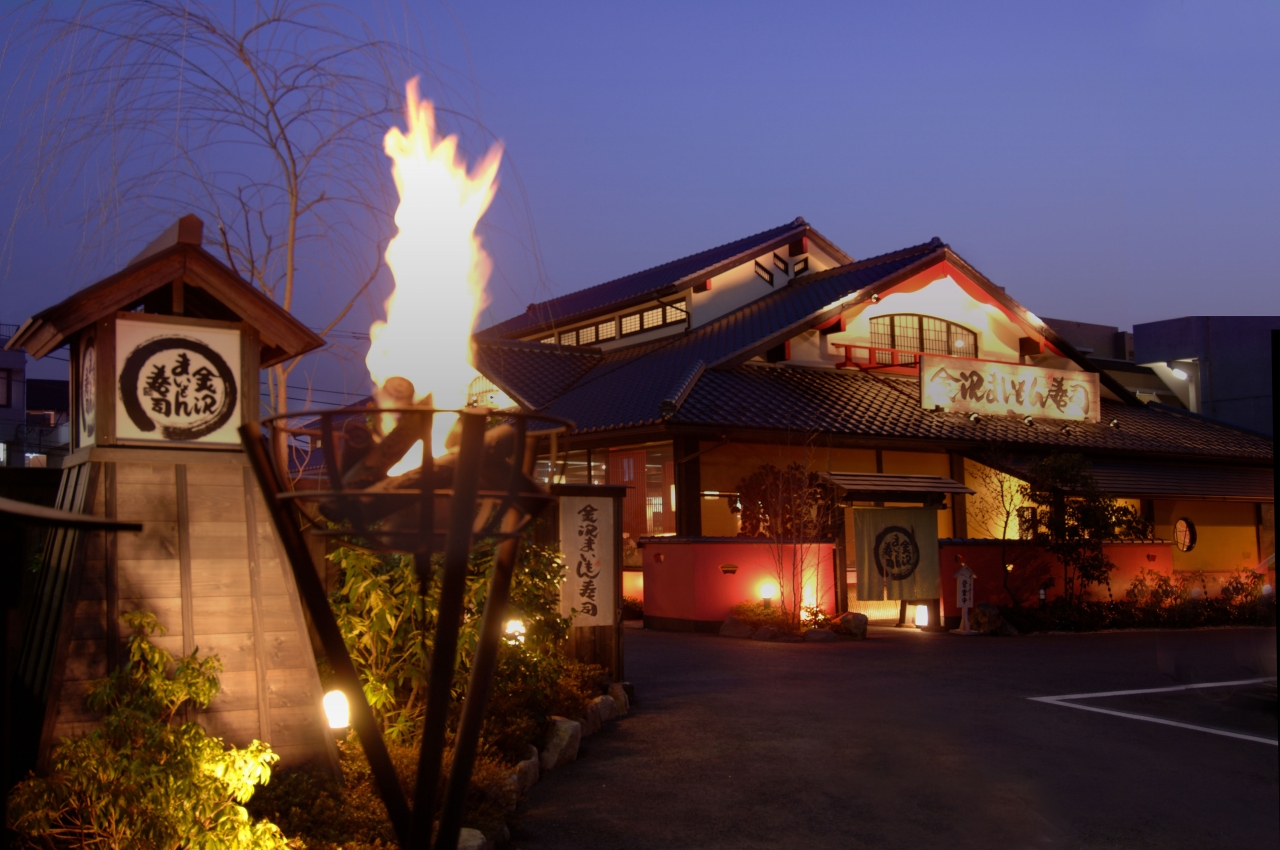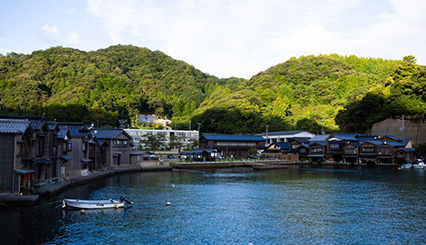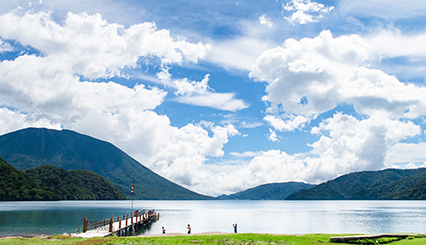CASE STUDY
Search by area
Search by keyword
- All
- Ryotei & Restaurants
- Lodging/Hotels
- Producers
- Technology
- DX (Digital) & SNS
- City Planning
- Utilization
- Gastronomy and Culinary
- Japanese Nature
- Japanese history and traditional culture
- Japanese Food Culture
- Agriculture
- Fisheries
- SDGs
- Local production for local consumption
- Foreigner Activation
- Experience
- Overseas Expansion
- Fermentation
- Public-private partnerships and collaborations
- Sake
- Community Revitalization
- Spirituality
- Japan of the Sea
- Mountain Japan
VIEW ALL
-
Chugoku
19 Finding Value in What Is Available The Fascinating Nature, People, History, and Food Culture of the Oki Islands
The Oki Islands are located 40–80 km north of the Shimane Peninsula. The Oki Islands consists of 180 islands of various sizes, four of which are inhabited, and blessed with abundant nature. These nature-rich remote islands have long been a place for interaction between people and culture. Historically, there were well-known as the place where Retired Emperor Go-Toba and Emperor Go-Daigo were banished, while the islands also flourished as a stopover for ships sailing the Sea of Japan during the Edo period. The rich and diverse cultures that have developed throughout this long history has been carried on to the present day. Fascinated by the charming way of life, many people have also moved to the Oki Islands. Records of the Oki Islands appear as far back as in the Kojiki, or Chronicles of Japan. Looking back on this history, today these migrants are working to create a new future for the islands. As remote islands, there are some things that are “missing” from the islands. However, people here have realized what “exists” only on these remote islands.
Read more -

Kyushu
17 Building a Future for Kuma Shochu through the Passion and Strategies of Local Distilleries Hitoyoshi Kuma
Kuma Shochu is one of the shochu brands designated as a Geographical Indication by the World Trade Organization. It is produced in the Hitoyoshi Kuma region, which is in a long, thin basin that stretches 40 km east to west and 10 km north to south in the southern part of Kumamoto Prefecture. The basin is surrounded by the Kyushu Mountains and through its center runs the Kumagawa River, one of the three fastest flowing rivers in Japan. Hitoyoshi Kuma has been called “Japan’s most vibrant hidden village.” Unusually, there are 27 different shochu distilleries centered in this one region. Each of these distilleries has carried forward the area’s more than 500-year-old rice shochu tradition, and today they continue to create unique shochu products that maximize their individual features and charms. During the Meiji period (1868–1912), Kuma Shochu was an extravagant drink that cost four times as much as sake. One of Kuma Shochu’s appeals is the hard work that distillery owners put in to raising the product’s value.
Read more -

Hokuriku
16 SUSHI×TECHNOLOGY Pioneering the Future of Food Culture from Kanazawa.
Kanazawa City in Ishikawa Prefecture in Japan’s Hokuriku area is known for Kenroku-en Garden, Kanazawa Castle, and the Nagamachi Samurai District, all of which are steeped in the history and culture of the expansive former Kaga domain; as well as magnificent food culture that incorporates the delights of the Sea of Japan. Kanazawa Maimon Sushi was first launched in Kanazawa City in 2000. Extremely popular as a high-quality, gourmet kaitenzushi (conveyor-belt sushi) restaurant, Kanazawa Maimon Sushi has attracted a lot of media attention. M&K Corporation is the restaurant’s managing company, and using Kanazawa as its platform, it is currently working to expand the potential of sushi worldwide as a central element of Japan’s food culture. Kanazawa Maimon Sushi has in place a unique strategy for the future of sushi—this has the potential to impact significantly on food not only in Japan, but around the world.
Read more -

Kinki
14 Lifestyles in Close Proximity to the Sea.An Area that Brings Together Sustainable Development and Unique Attractions—Ine Town
Ine Town, located in the northern part of Kyoto Prefecture, is known for its funaya, or wooden boathouses. One of the most scenic spots in Japan, the town is frequently used as a filming location for movies and TV dramas. Visitors to Ine Town can experience what it is like to live closer to the sea than anywhere else in Japan. The sea and the fish within it could not be any closer. What is the best way to communicate the unique charms of Ine Town to the wider world? Today, the ideas of Ine locals are gradually taking shape. Be it initiatives to promote the area’s unique seasonal delights, including early summer oysters, autumn squid, and winter yellowtail; accommodation limited to one group per day where guests can fully enjoy being right next to the sea; or new tourism projects to further vitalize the town. Locals are steadily making progress toward the future while balancing the history and nature of Ine Town with entirely new elements.
Read more -

Chugoku
13 Creating New Value—the Setouchi Terroir
SETOUCHIJOZOJO, the closest winery to the sea in Japan, was established in 2021 on the remains of a shipyard in Sunami, an area in Mihara City in Hiroshima Prefecture. Right in front of the winery is Mihara-Seto, where is said to be one of the most popular sights of the Seto Inland Sea for the beautiful landscape of many islands. The winery’s buildings cut the landscape which is picturesque and spreads over wherever you see. The concept for SETOUCHIJOZOJO is “Wine and Winery that Travels around Setouchi.” Utilizing the unique features of each ingredients’ producing regions, they produce wine and cider without any additional sugar, placing the utmost value on the original flavor of the fruits and the producers’ thoughts and ideas. At the winery’s adjoining restaurant, Mio, visitors can enjoy pairing seasonal foods from the Setouchi area and various wines and ciders created from products from the mountains. The restaurant has recently garnering attention as a new tourist hotspot of the Seto Inland Sea. For Yuya Ota, owner of the winery and restaurant, this was not a family business, nor does he have any experience in winery and restaurant management. Ota says that the biggest power in setting up the business from the ground up was “co-creation with regional stakeholders.”
Read more -

Kita-Kanto
11 Toraya—Aiming for the Future as an Establishment Steeped in History and Tradition
Since its founding in the late Muromachi period about 500 years ago, confection manufacturer Toraya has continued to carry forward the history and culture of wagashi—or traditional Japanese confections—and today is an established name both in Japan and abroad. Toraya became a purveyor to the Imperial Court during the reign of Emperor Go-Yozei (1586–1611), and for centuries has catered to the needs of its patrons. The company has also continued to develop new wagashi for overseas markets and to further extend the reach of its delicious flavors and unique charms. With the aim of taking over Toraya, Mitsuharu Kurokawa, the 18th and current head of the company, crossed over to study in the US while still at high school, and followed this up by accumulating vast experience in a range of settings, including wagashi production sites, the company’s boutique in Paris, and external roles in foreign trade. Here we speak to Kurokawa, who assumed the role of president in 2020, about the company’s management philosophy— to share the pleasures of traditional Japanese sweets(wagashi )—maintaining traditions as a long-established store, his forward-looking strategies for the future, and various other initiatives.
Read more -

Chugoku
9 The Importance of the Capacity to Change
Otafuku Sauce is currently engaged in efforts to communicate the appeals of konamon (flour-based) dishes in Europe, the US, and Asia, and in turn to drive exports of its sauce products. Although to date the company has developed new sales channels through face-to-face sales activities, during the COVID-19 pandemic, these methods these methods were no longer viable. “If we cannot connect with our overseas customers, we cannot survive”—this was the message from general manager of the overseas sales department Hwisung Hong and his team. In response, they sought to develop new sales channels through online cooking classes and YouTube videos, and as a result they achieved a 40% year-on-year increase in overseas sales. The secret to the team’s success was their joint work with TSS Production, a company that supports the development of overseas sales channels through content production. Through the use of media, even regional companies can connect directly with overseas retailers and consumers to open up new channels. Below we delve further into this success story.
Read more -

Kita-Kanto
5 Local Tochigi Culture and Ingredients at The Ritz-Carlton, Nikko
The Ritz-Carlton, Nikko opened in July 2020 on the shores of Lake Chuzenji in Okunikko. The luxury hotel sits in an area that is home to the shrines and temples of the Nikko area—where also have been designated a UNESCO World Heritage Site—abundant natural surroundings, rich culture, and ancient history and tradition. Today, it has grown into one of Japan’s leading and often fully-booked hotels. Interestingly, Okunikko in Tochigi Prefecture is recognized to be Japan’s oldest holiday resort, and is now host to a cutting-edge facility in The Ritz-Carlton, Nikko. In addition to its globally acclaimed level of service, the hotel has garnered attention for the thorough harmony and coexistence it has sought to achieve with the area through the creation of business ecosystem, be it in the food, guest activities, or the interior design and finer details.
Read more -
Kinki
4 Enjoying Rustic, Exquisite Tsumikusa Cuisine Surrounded by Unchanged Japanese Landscape and Culture
Just under an hour from central Kyoto up steep mountain roads in the Hanase region—often referred to as one of the “back rooms” of Kyoto—is a discreetly positioned inn named Miyamasou. Miyamasou was first established in 1895 as a guesthouse of Bujo-ji Temple. Today, Miyamasou is a place where guests can go back in time and experience the lifestyles of ancient Japanese villages. In a sukiya-zukuri style building designed and constructed by master carpenter Sotoji Nakamura, guests can enjoy a range of rustic dishes that are made using ingredients from the mountains which were hand-picked by chefs. These unique ingredients include wild herbs and wild flowers, fresh water fish such as sweetfish and amago, wild birds, wild boar, deer, and even bear. Miyamasou removes guests from everyday life, providing them with a unique experience that they can fully enjoy with their five senses.
Read more -
Yoshihiro Narisawa, the owner-chef of restaurant NARISAWA in Minami-Aoyama, Tokyo, is one of Japan’s world-class chefs and an artist dedicated to crafting a variety of innovative food creations. For more than 20 years, Narisawa has been focused on the culture found in rural foothill villages of Japan, called satoyama culture, where people coexist closely with nature. He explores the rich food culture and the ancestral wisdom passed down there, and expresses it through his uniquely creative cooking style—establishing a new genre he calls “innovative satoyama cuisine.” His work demonstrates his philosophy of “beneficial and sustainable gastronomy,” environmentally-conscious gourmet dining that shows respect for nature while nourishing body and mind. Narisawa shows his commitment to preserving satoyama culture through his activities in Japan and around the world, and by sharing his message, as he continues to search for the ideal future of food culture.
Read more
記事検索
キーワードから探す
- すべて
- Ryotei & Restaurants
- Lodging/Hotels
- Producers
- Technology
- DX (Digital) & SNS
- City Planning
- Utilization
- Gastronomy and Culinary
- Japanese Nature
- Japanese history and traditional culture
- Japanese Food Culture
- Agriculture
- Fisheries
- SDGs
- Local production for local consumption
- Foreigner Activation
- Experience
- Overseas Expansion
- Fermentation
- Public-private partnerships and collaborations
- Sake
- Community Revitalization
- Spirituality
- Japan of the Sea
- Mountain Japan
VIEW ALL





